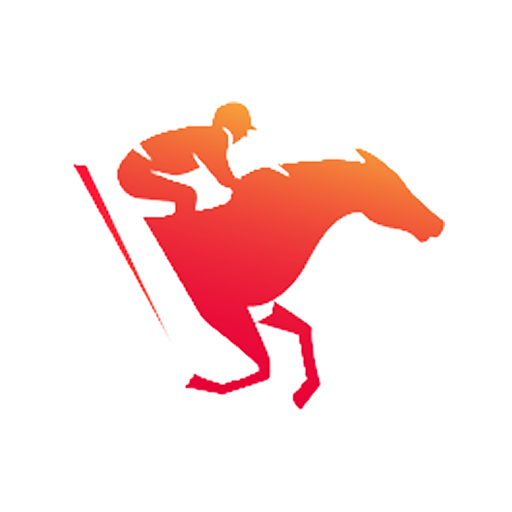


SARGA.CO—Horse racing is filled with tension, from the thundering hooves and roaring crowds to the unwavering focus of the jockeys. Amid this high-speed rhythm, photography plays a vital role in capturing the energy, speed, and emotion that unfold in a split second.
Photographers, in many ways, are like jockeys behind the lens. They must be agile, precise, and have a sharp instinct for timing. Through their lenses, photographers bridge this sport with the public, offering a timeless visual narrative that distills the drama of the racetrack into a single, compelling image.
Capturing moments in horse racing absolutely is not easy. It takes more than advanced camera gear; it demands a deep sensitivity to the subject. Timing is everything. A delay of just one second could mean missing a moment that will never happen again.

Photographers typically rely on high-speed shutters and long telephoto lenses. This equipment allows them to shoot from a safe distance while still producing crisp, high-quality images.
Beyond technical skills, photographers must also understand the rhythm of the race: when the horses burst from the gate, where critical turns occur, and the best angles as they near the finish line. Without this knowledge, it’s nearly impossible to capture photos that are not just sharp but also tell a compelling story.
The fast pace of horse racing brings forth dramatic, fleeting moments—from the instant horses leap from the starting gate, the intense focus on a jockey’s face, to the final charge toward the finish line. Every second is packed with emotional weight.
Equally powerful are the post-race moments: a trainer embracing a horse with pride, the crowd erupting in cheers. These are the snapshots that elevate a photograph into something truly valuable.
More than just action shots, horse racing photography reveals the human side of the sport. The article Aesthetics of Equestrian Photography emphasizes the importance of emotional authenticity in images, capturing humanity within the adrenaline-fueled atmosphere.

Moments of enthusiastic spectators following the race, horses being prepared by groomers, jockeys adjusting saddles, and the subtle gestures shared between humans and horses are more than just images—they are stories that weave a visual narrative of the horse racing.
In today’s sporting landscape, photography plays a role just as crucial as statistics or scores. In horse racing, visuals are not merely aesthetic additions to a race report—they are tools for promotion, analysis, and storytelling.
Many trainers use race-day photographs to evaluate a horse’s posture and a jockey’s positioning. As noted on the Paddock Punter website, visual media are instrumental in performance reviews and technical improvements.
Meanwhile, the press relies on the power of imagery to attract and engage readers. Sponsors and event organizers depend on strong visual documentation to build a professional brand image. All of this underscores one truth: photography is no longer just a complement—it’s an essential part of the horse racing ecosystem.
Horse racing photographers must possess sharp instincts, physical endurance, and a comprehensive understanding of racing dynamics and equine behavior. They work in all weather conditions, all for the sake of capturing that one perfect shot.
This sentiment is also shared by Muhammad Afzian Nursan, a photographer at the horse racing track who began his career on the field in 2023. He admits that technical skills alone aren’t enough to capture moments on the track.
“Technique is the foundation, but beyond that, we need to understand the actual conditions on the field. That’s why it’s important to get to know the people who work there too. It helps us choose the right shooting spots and better understand what’s going on in the arena,” said Zian, as he is familiarly known.
When it comes to relying on instinct during a race, Zian acknowledges that it plays an important role—but it’s not the only key factor.
He believes that many elements work together to help a photographer produce not only technically sharp images, but also photos that tell a compelling story behind the captured moment.
“In horse racing, we’re not photographing humans, so there are many things we can’t control. That’s why, aside from instinct and mastering the technical basics of photography, we really need to understand the conditions on the ground. It makes it easier for us to move around while we’re out there,” he explained.
Work ethic is just as important. Photographers must be aware of safe zones around the track, respect the working space of jockeys and trainers, and avoid using flash that could startle or distract the horses.
“Obviously, we avoid areas too close to the track, they’re off-limits anyway. And since races are held outdoors, there’s no need to use flash, so we don’t disturb the horses,” Zian added.
This all proves that being a horse racing photographer isn’t just about creativity—it demands a high level of professionalism and discipline.
Horse racing blends speed, power, and strategy. Photography, meanwhile, is the art of freezing a moment in time. When the two come together, they create visuals that do more than record—they revive the intensity of the moment.
Through photographs, we don’t just see who won or lost. We feel the tension of the competition, the drive of the jockeys, and the emotional connection between horse and human.
Behind each frame lies the dedication of a photographer who makes the sport not just visible, but vibrantly alive.
To sum up, photography isn’t just an accessory in the world of horse racing. It’s the bridge between the breakneck pace on the track and the emotion that flows beyond the rails. Each shot captures more than action—it preserves stories, passion, and tension within a single image.
In races that unfold in the blink of an eye, photographers must read the rhythm, anticipate the moment, and shoot with impeccable timing. Their role goes beyond technicality—it’s strategic and deeply intuitive.
They support trainers in reviewing performance, provide crucial media documentation for sponsors, and help build the professional reputation of racing events. Through their photos, we feel the spirit, hopes, and pressures surrounding the race.
Horse racing is, on the surface, a sport of strength and strategy. But through the lens, it becomes a visual narrative—one that not only records but also brings the atmosphere to life. With every portrait captured, we don’t just witness victory; we experience the effort, dedication, and bond between jockey and horse.
This is what makes photography an inseparable heartbeat of modern horse racing.























































Install SARGA.CO News
sarga.co